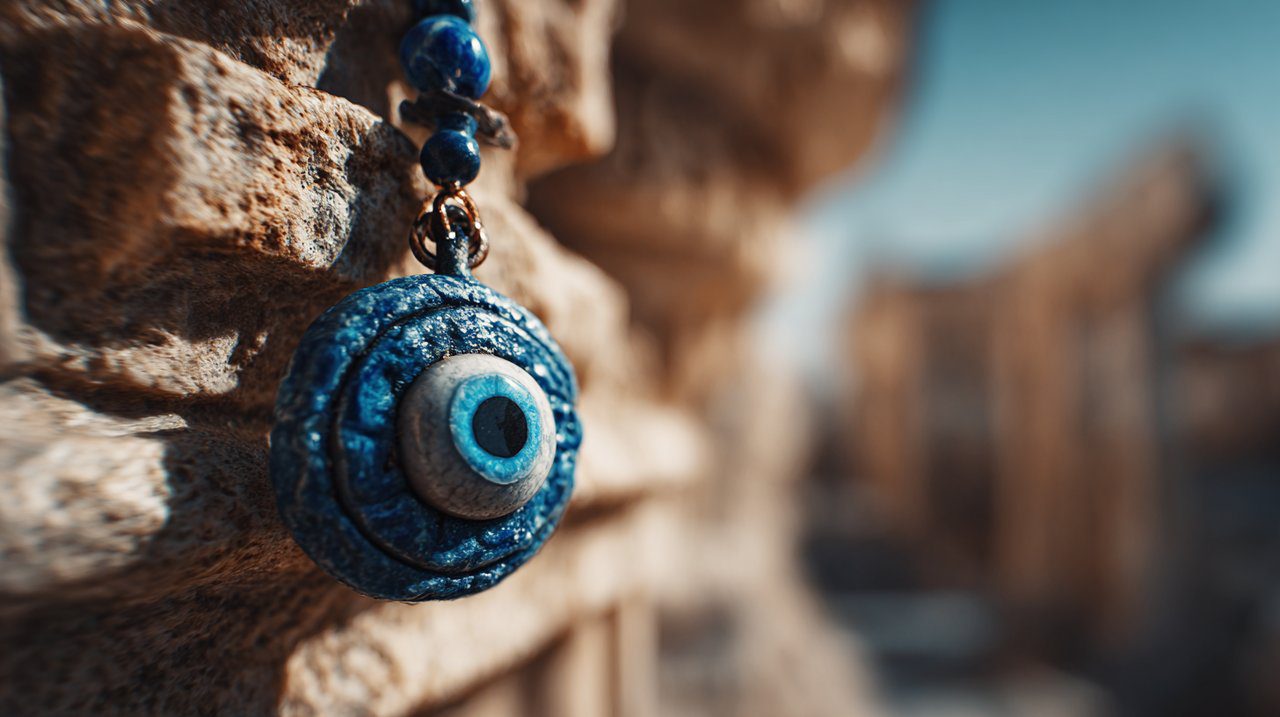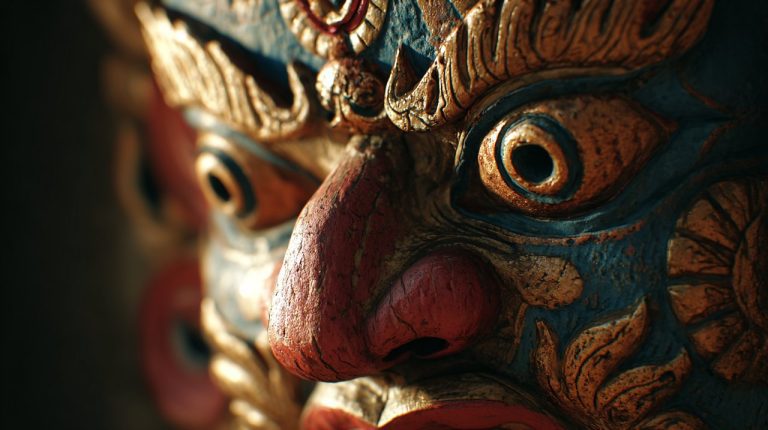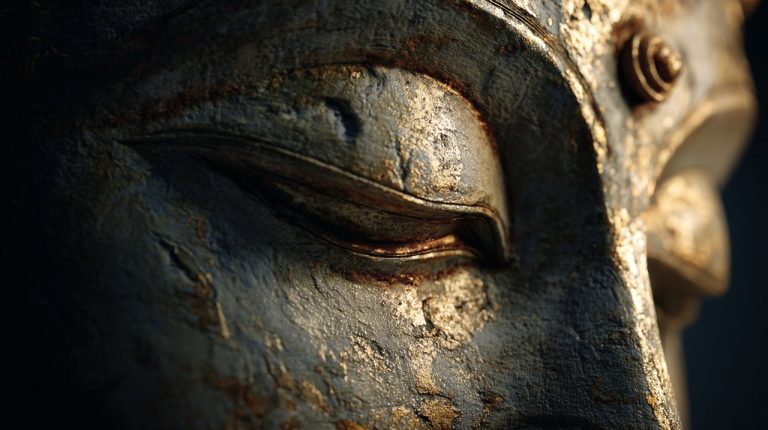The Enduring Gaze: Deconstructing Evil Eye Protection and Its Modern Meanings
For centuries, humanity has sought protection from unseen threats, a quest embodied by symbols like the Evil Eye. This ancient emblem, believed to deflect harmful gazes, stands as a testament to our universal desire for security. Originating in the sun-drenched Mediterranean and spreading to diverse cultures across the globe, the concept of a malevolent gaze has paradoxically inspired its most potent counter: the protective Evil Eye amulet. This duality highlights a timeless human endeavor to find safeguards against perceived dangers, much like the spiritual comfort found in mala beads or tibetan jewelry. It is a narrative woven through history, blending ancient fears with modern affirmation.

To fully grasp the Evil Eye’s deep impact, we must first understand its journey through history.
The Enduring Gaze: Ancient Fears and Modern Affirmation
The evil eye is more than a simple folk tale. It represents a deeply ingrained belief that an envious or malicious glance can bring misfortune, illness, or even death. This apprehension is not limited to one culture; it appears in countless civilizations, underscoring a shared human vulnerability.
Origins in Malicious Intent: The Apotropaic Principle
The concept of the evil eye arose from a fundamental human understanding of vulnerability to envy. In ancient societies, showcasing prosperity or good fortune was often believed to attract envious gazes. These glances, even if unintentional, were thought to cause misfortune or direct harm.
At its core, the primary function of an Evil Eye amulet is fundamentally apotropaic: it is designed to turn away, or actively ward off, evil.
Ancient civilizations, from the Sumerians to the Romans, developed protective talismans. These often featured an eye motif, designed either to reflect the malicious gaze or to distract it, thereby neutralizing its power. This apotropaic principle forms the foundation of evil eye protection. Similar protective intentions are seen in symbols such as pi xiu or the use of specific adornments like a red string protection bracelet to ward off ill will.
From Amulet to Adornment: A Cultural Evolution
Over centuries, the evil eye symbol transformed from a purely functional protective amulet into a culturally significant adornment. While its primary purpose remains protection, its aesthetic appeal and symbolic resonance have broadened. Today, it appears on jewelry, clothing, and household items. People wear it not just for defense, but as a statement of cultural identity or personal belief. This evolution mirrors the reverence for items like tibetan bracelets or buddhist mala necklaces in their traditions.
How does a simple eye symbol offer such profound reassurance? The answer lies in layers of belief, both ancient and modern.
Decoding the Shield: Mechanisms of Evil Eye Protection
Sympathetic Magic and Reflective Power
A key mechanism behind the evil eye’s protective power is sympathetic magic, based on the principle of ‘like affecting like.’ The amulet, by depicting an eye, creates a counter-gaze—a vigilant sentinel watching over the wearer. This symbolic eye performs several critical functions:
- Reflect Negativity: Like a mirror, it is believed to bounce back ill intentions or envious energies.
- Absorb Malevolence: Some traditions suggest the amulet actively takes the impact of the evil eye, metaphorically sacrificing itself (often by breaking) to shield the wearer.
- Distract the Gaze: Its prominent appearance draws initial harmful attention, diverting it from the intended target.
Ultimately, the evil eye acts as a proactive, visible shield against unseen, yet deeply felt, threats.
Psychological Comfort and Collective Belief
Beyond magical beliefs, evil eye protection offers significant psychological benefits. The simple act of wearing such a symbol can instill a deep sense of security and confidence. Knowing one is ‘protected’ often reduces anxiety and fosters a more positive outlook. The mind’s influence here is potent.
Consider these dynamics:
- The Power of Belief: The conviction in protection can, in itself, lead to positive outcomes. This is akin to the well-documented placebo effect, where expectation of benefit can manifest real physiological or psychological changes.
- Cultural Affirmation: For individuals from cultures where the evil eye is deeply prevalent, wearing the symbol is an act of adherence to shared traditions. It fosters a powerful sense of belonging and collective identity, reinforcing social bonds and cultural heritage.
- Subtle Mindfulness: The amulet serves as a tangible, ever-present reminder. It encourages grounding and acute awareness of one’s surroundings, prompting a more mindful approach to daily life.
This reinforcing collective belief system amplifies the symbol’s perceived power. It creates a self-fulfilling cycle of comfort and pervasive safety, meeting a fundamental human need for meaning and control in an often unpredictable world. Many spiritual practices, such as those involving meditation necklace, also tap into this deep connection between belief and well-being, offering a silent string of reassurance.
Understanding the interplay between ancient symbols and modern psychological needs reveals how items, like mala beads, become profound spiritual anchors. The Silent String: Buddha, Malas, and Nature’s Endless Cycle
The Evil Eye is not a singular entity; it manifests in a vibrant array of forms, each carrying distinct meanings.
A Spectrum of Safeguards: Meanings in Evil Eye Adornment
Modern evil eye jewelry, particularly in forms such as evil eye bracelet and beads, offers a rich array of meanings. These adornments, much like traditional tibetan beads necklace or prayer beads, serve not only as protective talismans but also as expressions of personal style and spiritual connection.
The Black Evil Eye Bracelet: Its Deeper Meanings and Potency
While blue is the iconic color for the evil eye, black holds a unique significance, especially in bracelet designs. The black evil eye bracelet connects to several powerful attributes:
- Grounding: Black often links to the earth, providing stability, rootedness, and connection to foundational energies.
- Absorption of Negativity: Unlike blue, which deflects, black is thought to actively absorb and neutralize negative energies, acting as a potent filter.
- Strength and Authority: Black conveys power and resilience. It offers robust protection against severe curses or concentrated envy.
Black evil eye bracelets are chosen for their understated elegance and profound protective qualities. They appeal to those seeking a powerful yet subtle safeguard. This protective quality is mirrored in materials like obsidian, a volcanic glass known for its ability to absorb and neutralize negative energies. Similarly, the vibrant energy of a Red Agate stone meaning often includes grounding and protective properties, making it another favored material for powerful amulets.
Vibrant Beaded Evil Eye: A Kaleidoscope of Intent
Beaded evil eye jewelry, appearing in bracelets, necklaces, or keychains, offers a rich array of meanings. These meanings derive from the specific colors and materials used. Each bead can represent a distinct intention or a specialized protective quality, much like the energies attributed to beads in a bodhi mala or other mala beads. It’s a palette of purpose, where each hue carries its own resonance:
- Blue (Traditional): The most classic color, signifying general protection, good karma, and positive energies. It is often associated with the sky and sea, representing vastness and calm.
- Light Blue: Represents truth, solitude, and the cultivation of a broad perspective. This lighter shade encourages open communication and inner peace.
- Dark Blue: Associated with karma and destiny protection, promoting calm and relaxation. Its depth often symbolizes stability and deep wisdom.
- Red: Imbues courage, enthusiasm, and energy, offering protection from fears. In many cultures, red is a powerful color of vitality and defense.
- Green: Symbolizes success, happiness, and good health. Linked to nature, it fosters growth and renewal.
- Yellow/Gold: Linked to the protection of health, relief from exhaustion, and fostering a sharp mind. These bright colors often represent vitality and intellectual clarity.
- Orange: Represents happiness, creativity, and personal fulfillment. It evokes warmth and a zest for life.
- Pink: Associated with friendship, love, and the protection of relationships. A gentle yet powerful hue for emotional well-being.
- Purple: Believed to boost imagination and aid in rebalancing one’s life. Often linked to spirituality and intuition.
- White: Denotes purity, focus, and the clearing of mental clutter. It represents new beginnings and clarity of thought.
Combining multiple colors in beaded evil eye designs creates a layered protective shield. This addresses various aspects of one’s well-being and aspirations, much like the intricate designs found in a hamsa evil eye bracelet, which merges two powerful protective symbols for enhanced safeguarding.
Beyond Blue: Exploring Other Protective Hues
The iconic blue evil eye is globally recognizable, yet the expanding palette of colors reflects diverse cultural interpretations and personal preferences. For example, some traditions favor a red evil eye for its association with passion and vitality, offering protection against energy drain. Green, linked to nature and growth, symbolizes protection for prosperity and overall health. Each color offers a specific energetic vibration, allowing individuals to choose a symbol that resonates with their needs. This customization highlights the adaptability and personal significance of the symbol, whether it’s a traditional amulet or a modern nazar bracelet.

As we navigate the complexities of modern life, the Evil Eye symbol continues to offer both solace and a bridge to ancient wisdom.
Embracing the Symbol: Personal Connection and Cultural Respect
Choosing Your Guardian: Intention and Authenticity
When selecting an evil eye charm, whether a vibrant beaded bracelet or a black bracelet with specific meaning, personal intention is crucial. The amulet’s symbolic power is believed to be amplified by the wearer’s conviction and purpose. Choosing a design or color that deeply resonates with one’s personal needs—be it for general protection, grounding, or specific emotional support—is thought to enhance its efficacy. Authenticity in this personal connection is paramount. This personal connection is also vital for other spiritual adornments, such as an authentic tibetan bracelet or a spiritual necklace, where the wearer’s conviction amplifies its perceived efficacy.
Understanding the specific guidelines and principles for wearing protective symbols, such as the Pixiu, can further deepen this intentional connection. Who Cannot Wear Pixiu? Bracelet, Ring, Pendant Guide: Understanding the Principles for Harmonious Energy
Bridging Worlds: A Universal Quest for Security
The evil eye’s journey, from ancient fear to modern adornment, powerfully reminds us of humanity’s shared vulnerabilities and universal aspirations. It bridges cultural divides, speaking to a common desire for security, good fortune, and protection against unseen forces. This universality is echoed in various protective and spiritual items, from tibetan rings to buddhist malas, each a testament to humanity’s enduring search for peace of mind. Its continued presence, from traditional amulets in archaeological digs to contemporary evil eye protection jewelry on modern wrists, affirms its status as a timeless symbol of resilience and hope.
Ultimately, the question that began our exploration—does the evil eye truly protect you?—finds its answer not just in historical belief systems. It also lies in the profound psychological comfort and deep cultural connection it continues to provide. Whether seeking the grounding power of a black evil eye bracelet or the vibrant energy of beaded evil eye designs, the symbol offers a tangible link to a universal quest for peace of mind.
What aspect of the Evil Eye’s enduring power resonates most with you?
💡 Frequently Asked Questions
The Evil Eye is a deep-rooted belief that an envious or malicious glance can bring misfortune, illness, or even death upon a recipient. This concept is found across numerous cultures.
The primary purpose of an Evil Eye amulet is fundamentally apotropaic, meaning it is designed to turn away, or actively ward off, the malevolent influence of the Evil Eye.
It's believed to protect through sympathetic magic by acting as a counter-gaze that reflects or absorbs negativity and distracts the harmful gaze. It also provides psychological comfort, instilling security and fostering a connection to cultural beliefs.
Yes, while blue is the most common for general protection, other colors carry distinct meanings. For example, black is associated with grounding and absorbing negativity, red with courage, green with success, and yellow with health.







